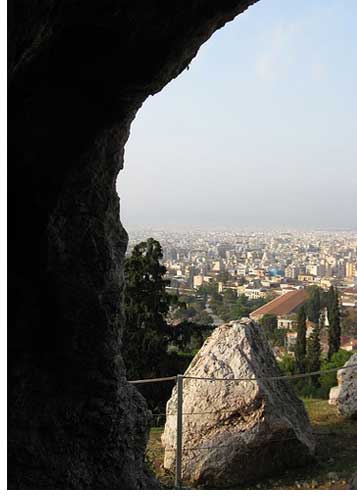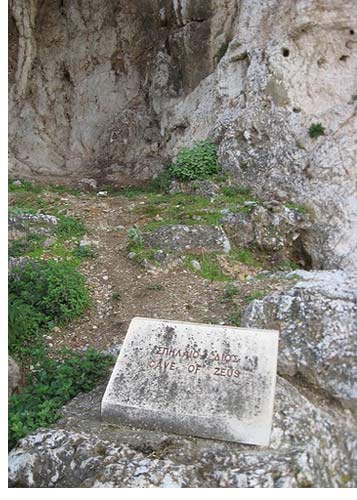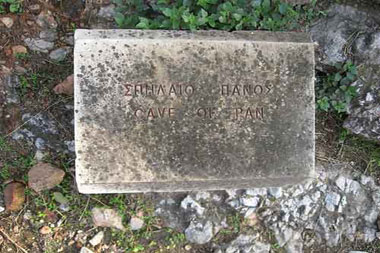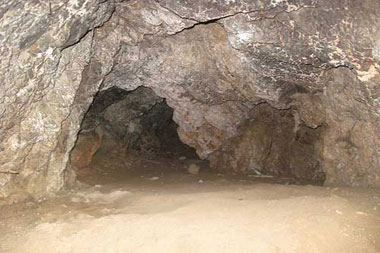The Acropolis of Athens - Acropolis Walkway


Clepsydra: In the western side of the Acropolis Clepsydra spring is situated inside a cave. The spring was formerly called Embedo and it changed its name because its water was sometimes obvious and other times hidden. In the beginning of the 5th century BC, Kimon transformed the spring into a fountain. During the 10th century AC rocks fell inside the fountain so special works were needed in order to be able to take the water. During the Christian years the Clepsydra becomes holy and the small church of Agioi Apostoloi is built upon its ruins.
Later, the spring was buried underneath the rocks and forgotten. In 1822, when Athens was temporarily freed by the Turks Kyriakos Pittakis, the first Greek archaeologist and fighter discovered it and made it known to the Greek chieftains.
Apollo's altar in the cave: Near the Clepsydra is the altar-cave of Apollo. After the election of the nine archons of Athens, it was usual to take an oath in the altar of Apollo Patroos and then to come here to take a second vow. Among other things they vowed that if they didn't govern correctly or became embezzlers of the public property they would create a golden statue of Apollo Pythiou-Patroou inside the altar. When their service was finished they offered a marble plaque with sculpted laurel and myrtle wreaths in memory of their successful service for the public good. An abundance of such plaques were found inside the cave and the area around it.
Cave of Zeus Astrapaios: right next to the cave of Apollo there is a second, more impressive cave, dedicated to Zeus. Every spring the Pythaists waited inside the cave for a lightning, a sign from Zeus appearing on the top of Arma hill in Parnitha mountain in order to begin their course towards Delphi. The Pythaists were chosen Athenian citizens who represented the city during the Delphic celebrations of the Pythians. When the Pythaists were returning from the Delphic altar they were bringing back uninfected fire, "new light", to purify the altars of Athens.
Cave of Pan: next to the cave of Zeus Astrapaios and a bit to the east another small cave was found, dedicated to the god of woods and shepherds, Pan. The worship of Pan came in Athens late, after the victory of Marathon in 490 BC. Tradition has it, according to the sayings of Herodotus, that Pan appeared in the battlefield of Marathon, spread terror to the Persians and helped the Athenians win even though they were fewer. The Athenians, grateful for this victory they decided to honor Pan here and they also organized a torchlight procession. They curved small sockets on the rock and placed their oblations, statues, flutes and even delicacies. The cave of Pan is known to us from the work of Aristophanes, Lysistrati. During the Christian years the sacred cave of the goat-legged god will become Saint Athanasios' church.

Mycenaean Drinking Fountain - Erse's Cave: an impressive cave is situated a bit towards the east and it is attributed to Aglavros, the daughter of Cecrops. Recent research has shown that this was the altar of Ersi. This cave is in fact a drinking fountain formed when the Mycenaeans surrounded the Acropolis with walls during the second half of the 13th century BC. Its entrance was found on the Acropolis near the Erechtheum. The Mycenaean drinking fountain was barely used (for almost 30 years) as it is obvious from the vases that were found. It is probable that a landslide covered the fountain and as a result its bottom part was forgotten in contrast to the upper part which was used as a secret exit of the Acropolis.
This passage is connected to a heroic page of the newer Greek history written during the years of the German occupation. On the 30th May 1941 two young students, Manolis Glezos and Apostolos Santas, passed through the opening of the cave fooling the guards. They silently approached the German flag and pulled it down. They came out the same way and they threw the hated flag of the conquerors inside the blurry waters of the fountain. After the liberation they have been recognized as the first resisting parties of Europe.
The altar of Aphrodite in the garden: here, the worship of Aphrodite replaced the one of the Mycenaean goddess with the doves worshipped as the goddess of fertility near the Mycenaean entrances of the Acropolis. In this shrine of the goddess of love and fertility a group of arrifores was coming one summer night to perform a ceremony of revival of an old agricultural custom whose purpose was to reinforce the fertility of the ground. On the rock of the shrine on carved sockets the ancient worshippers placed their oblations. At the same location many dedicative signs for Aphrodite and love were found.
Moving on, towards the northeastern side of the Acropolis we can see the neighborhood called Anafiotika, outside the walls. Small white-washed houses with narrow alleys remind us the villages of the Cycladic islands. This picturesque quarter was built in the middle of the 19th century from handymen coming from Anafi island.







